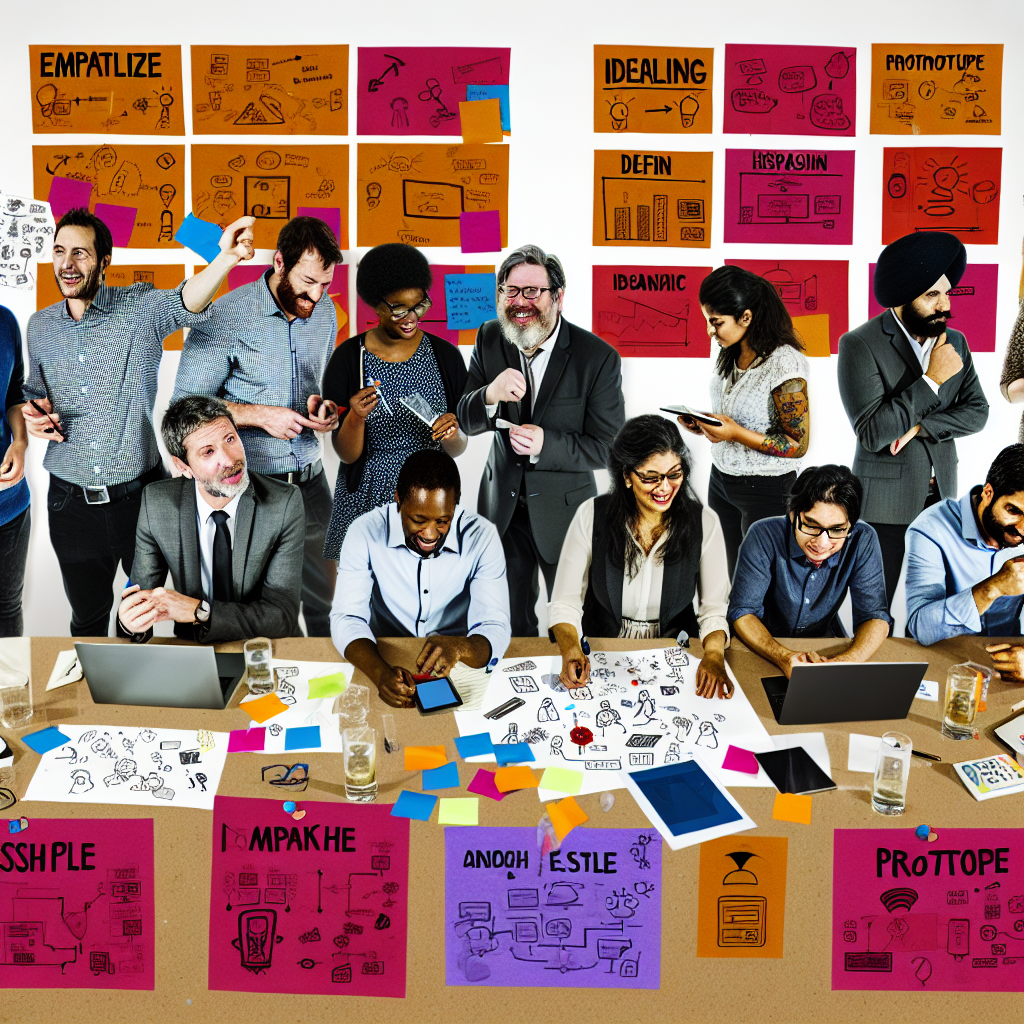Master Design Thinking for an Enhanced Customer Experience (CX)
Design thinking is a methodology that places the customer at the center of the design process, aiming to optimize customer experience (CX).
What is Design Thinking in CX?
Design thinking is a problem-solving approach that prioritizes human needs and experiences. This methodology encourages organizations to understand and address the real needs of their customers, leading to improved customer satisfaction and loyalty.
The design thinking process involves five key stages: empathize, define, ideate, prototype, and test. Each stage focuses on understanding the user, defining the problem, brainstorming solutions, creating prototypes, and testing those solutions. By incorporating these stages, businesses can create customer-centric products and services that meet and exceed expectations.
The Stages of Design Thinking
Here is a breakdown of the five stages of design thinking and their importance in enhancing customer experience:
- Empathize: Understand your customers deeply by engaging with them directly, conducting interviews, and observing their behaviors. This helps in identifying pain points and areas for improvement.
- Define: Clearly define the customer problems you aim to solve. Use the insights gathered during the empathize stage to craft a detailed problem statement.
- Ideate: Generate a broad range of ideas and potential solutions. Encourage creativity and out-of-the-box thinking within your team to explore all possible options.
- Prototype: Create tangible representations of your ideas. Prototypes allow you to test different concepts quickly and gather feedback from customers.
- Test: Conduct user testing to evaluate your prototypes. Gather customer feedback and refine your solutions based on their input.
Applying design thinking can lead to innovative solutions that enhance customer satisfaction and loyalty.
Benefits of Design Thinking in Customer Experience
Design thinking offers numerous benefits that can revolutionize customer experience:
- Enhanced Customer Understanding: By empathizing with customers, businesses gain deeper insights into their needs and preferences, leading to more tailored solutions.
- Improved Problem Solving: The iterative process of prototyping and testing ensures that solutions are thoroughly vetted and optimized based on real customer feedback.
- Innovation and Creativity: Encouraging a variety of ideas fosters a culture of innovation, leading to unique and effective solutions.
- Increased Customer Loyalty: When customers feel understood and valued, their loyalty to the brand grows, resulting in long-term business success.
Implementing Design Thinking in Your Organization
Here are practical steps to implement design thinking in your organization:
- Build a Cross-Functional Team: Assemble a diverse team with various skills and perspectives to ensure a holistic approach to problem-solving.
- Invest in Customer Research: Conduct comprehensive research to gather in-depth insights into your customers’ needs, behaviors, and pain points.
- Encourage Open Communication: Foster a culture of open communication and collaboration where team members feel comfortable sharing ideas and feedback.
- Create a Safe Environment for Experimentation: Encourage experimentation and accept failures as opportunities to learn and refine solutions.
- Iterate and Refine: Continuously refine your solutions based on customer feedback, ensuring that your final product or service meets customer needs effectively.
By following these steps, organizations can effectively implement design thinking, ultimately enhancing their customer experience.
FAQs
What industries can benefit from design thinking in CX?
Design thinking can benefit a wide range of industries, including retail, healthcare, finance, technology, and more. Any industry that prioritizes customer satisfaction and seeks to improve their offerings can leverage design thinking to gain a competitive edge.
How can small businesses apply design thinking to enhance CX?
Small businesses can apply design thinking by starting with customer interviews and observations to understand their needs better. They can then use this data to ideate, prototype, and test solutions on a smaller scale, ensuring that their limited resources are used effectively to enhance customer experience.

